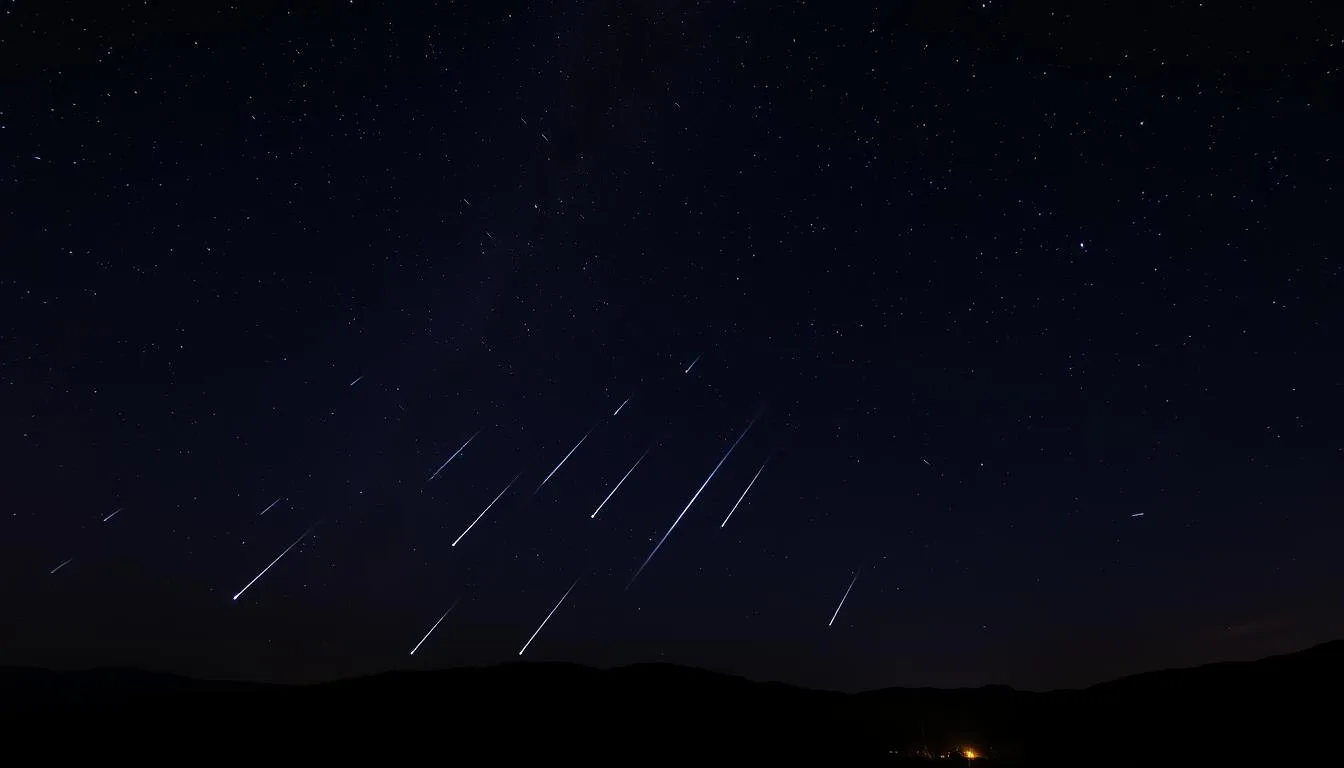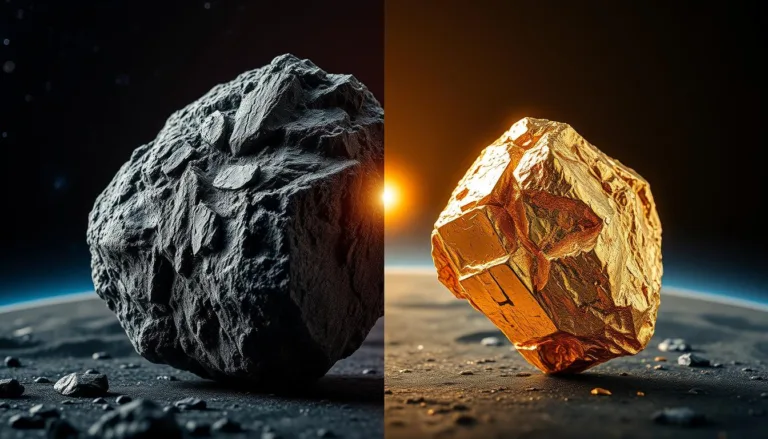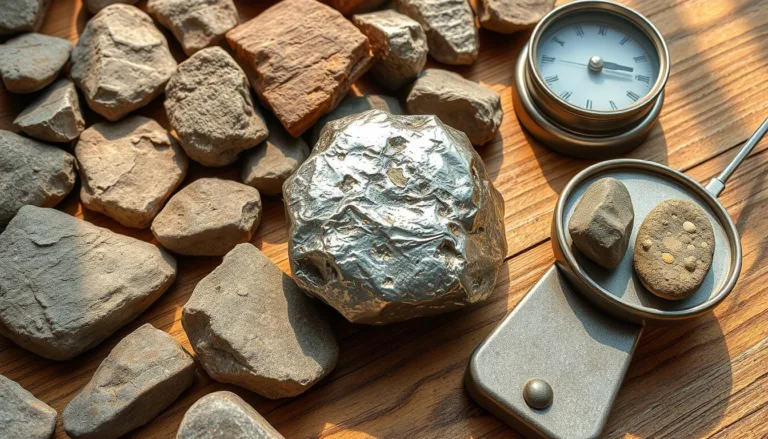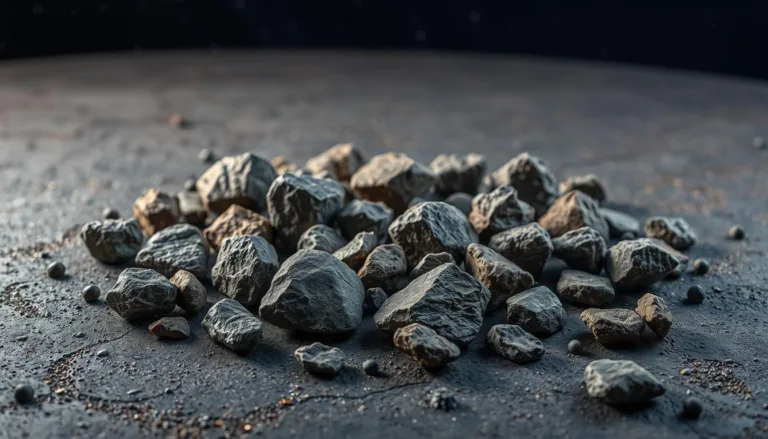Meteors, or shooting stars, light up the night sky. But have you ever thought about what happens when they land on Earth? Welcome to the world of meteorites – space rocks that make it to our planet.
Meteorites come from asteroids, comets, and other space debris. They start their journey in the asteroid belt or are kicked out of other planets. These rocks travel through space before landing on Earth. Learning about their fall can reveal secrets about our solar system’s past.
Key Takeaways
- Meteorites are space rocks that have survived the journey through Earth’s atmosphere and landed on our planet.
- Meteorites originate from the asteroid belt or are ejected from other planetary bodies.
- The journey of a meteorite from space to Earth’s surface is a captivating and complex process.
- Studying meteorites can provide valuable insights into the formation and evolution of our solar system.
- Witnessing the fiery entry of a meteorite into Earth’s atmosphere can be a breathtaking and awe-inspiring experience.
Understanding Meteorites: From Space Rocks to Earth Visitors
Meteorites are amazing space rocks that have caught the interest of many. They come from the asteroid belt or other planets. These fragments give us a peek into how our solar system was formed.
Different Types of Meteorites
There are three main types of meteorites: iron, stony, and stony-iron. Iron meteorites are mostly iron and nickel. Stony meteorites are made of silicate minerals. Stony-iron meteorites are a mix of both.
The Origin of Cosmic Fragments
Meteorites come from the early days of our solar system. They broke off from asteroids or comets. For billions of years, they floated in space until Earth’s gravity pulled them in.
Composition and Structure
Studying meteorites helps us understand our solar system’s history. By looking at their minerals and elements, scientists can uncover the past of these space rocks.
| Meteorite Type | Composition | Origin |
|---|---|---|
| Iron Meteorites | Iron and Nickel | Cores of Planetesimals |
| Stony Meteorites | Silicate Minerals | Fragments of Asteroids |
| Stony-Iron Meteorites | Iron, Nickel, and Silicate Minerals | Transition Zones of Planetesimals |
These space rocks, whether iron, stony, or stony-iron, are like windows to the past. They give scientists key insights into our solar system’s creation.
“Meteorites are like visitors from the distant past, carrying with them the secrets of the solar system’s formation.”
The Journey Through Space: From Asteroid Belt to Earth’s Atmosphere
The path of meteorites from space to Earth is both fascinating and complex. They come from the asteroid belt, between Mars and Jupiter. These cosmic fragments are pieces of ancient bodies that have split apart over time.
Collisions in the asteroid belt can send these extraterrestrial debris flying. They then get pulled by the planets’ gravity, often heading towards Earth.
- Gravitational forces: The strong pull of planets and other bodies can change a meteorite’s path and speed.
- Solar system dynamics: The Sun’s gravity, the planets’ orbits, and changing solar system conditions all affect meteorite paths.
- Orbital perturbations: Smaller objects can also alter a meteorite’s path, causing unexpected changes in its journey.
As meteorites approach Earth, they face new challenges in the atmosphere. The next part will look at what happens when they enter Earth’s atmosphere and land.

“The study of meteorites has revealed invaluable insights into the formation and evolution of our solar system, providing a window into the past that we can’t observe directly.”
How Do Meteorites Fall to Earth?
Meteorites start an amazing journey when they enter Earth’s atmosphere. This journey is full of dramatic changes as they fall to the planet’s surface.
Atmospheric Entry Process
Fireball meteors and shooting stars are pieces of asteroids or other cosmic objects. They come from the asteroid belt or other parts of space. When they reach Earth, they enter the atmosphere, starting a key part of their journey.
Speed and Trajectory Changes
When meteorites hit the atmosphere, their speed and path change a lot. The air’s friction slows them down fast, from 30,000 mph to a few hundred in seconds. This change can make them land in unexpected places.
Heat Shield Formation
The heat from air friction creates a protective layer around meteorites. This layer, called a heat shield, helps them survive the fall. It prevents them from burning up completely and lets some reach the ground.
The journey of meteorites to Earth is fascinating. It shows how the sky and our planet interact. From entering the atmosphere to forming a heat shield, each step is a part of their incredible story.
Fireball Meteors and Shooting Star Phenomena
The night sky can light up with amazing sights, like shooting stars and fireball meteors. These sights happen when meteorites zoom into Earth’s atmosphere fast. They create a beautiful show for those who watch.
A shooting star, or meteor, is a small piece of space debris burning up in our atmosphere. It leaves a glowing trail in the sky. A fireball meteor is bigger and brighter, seen over a large area, sometimes even casting shadows.
Meteor showers happen when Earth goes through a comet or asteroid’s debris field. During these times, many more meteors can be seen. This makes for incredible views for those who go outside to watch.

“The cosmos is full of magical things, patiently waiting for our wits to grow sharper.” – Eden Phillpotts
Watching a single shooting star or a whole meteor shower is awe-inspiring. It shows us the magic and mystery of the universe. Learning about fireball meteors and their links to comets and asteroids helps us appreciate the wonders of the night sky.
Impact Events and Landing Patterns
Meteorites hitting Earth can create amazing impact events. They leave behind cool craters and interesting landing patterns all over the world. These visitors from space give us important clues about our solar system’s creation and growth.
Famous Meteorite Landings
Many meteorite landings have amazed people everywhere. The Willamette Meteorite in Oregon is famous, weighing over 15 tons. It shows the incredible power of these space rocks. The Tunguska event in Siberia in 1908 is another big example. It was a huge explosion caused by a meteorite.
Crater Formation Process
When a meteorite hits Earth, it can make craters. These craters are like records of past crashes. Places like the Barringer Crater in Arizona and the Vredefort Crater in South Africa are studied by scientists. They learn about the meteorite’s size, speed, and what it’s made of.
Geographic Distribution
Meteorite landings don’t happen everywhere. Some places are more likely to see these events. Deserts and ice sheets are good places because they’re open and easy to see. The Antarctic and the Sahara Desert are great for finding meteorites, helping scientists learn more.







